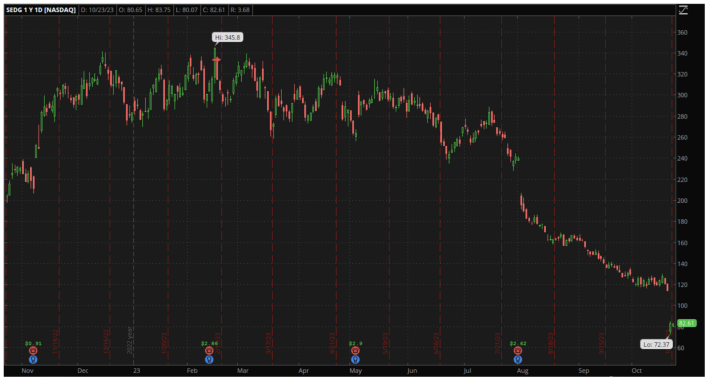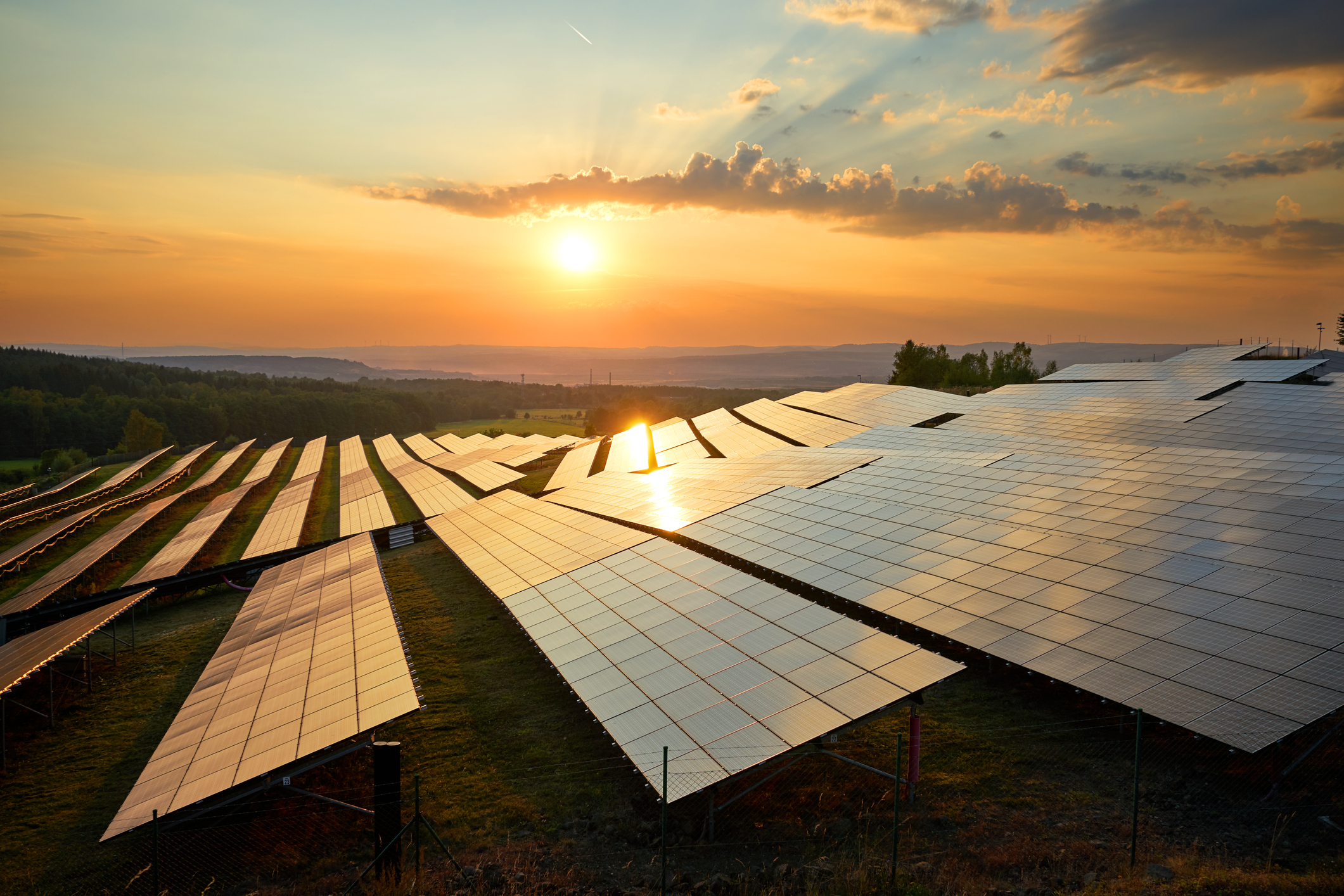For many people, solar energy stocks have been one of the greatest disappointments of the last few years. The case for them is so obvious, with most of the world’s governments committed to moving away from fossil fuels and towards solar and wind power. Wind turbines, though, have become the subject of some crazy conspiracy theories and hostility on aesthetic grounds, as they are very visible and not exactly pretty, so solar power looks to be the future for a while. Despite that, stocks in the industry have dropped significantly since the beginning of 2021, a fall that has accelerated over the last few weeks and reached new depths with a massive drop on Friday.
Invesco Global Solar ETF (TAN) 12/31/2020 To 10/22/2023
What is going on? Why are solar stocks, which have such an obvious long-term bullish use case, tanking?
The immediate cause of Friday’s big drop was a profit warning and a big cut in revenue guidance from SolarEdge (SEDG), a supplier of inverters, the parts that convert the direct current produced by solar panels into the alternating current used by power grids. That makes them a key supplier to the whole panel industry, and as such a pretty reliable indicator of what is to come further down the line. They slashed their Q3 revenue guidance from the previous $880-920 million to $720-730 million, warning that installation rates had fallen, even in the traditionally strong late summer, early fall season.
That explains the big drop on Friday, but not what has been going on for months prior to that. The reasons they gave for their announcement, on the other hand, “higher-than-expected inventory in the channels and slower-than-expected installation rates”, do. What people tend to forget when they hear a story as compelling as that of solar energy is that no matter how logical growth in an industry is, the basic laws of supply and demand still apply, and any product can be commoditized.
Around three quarters of the world’s solar panels are made in China, so when that country shut down in 2020 during the pandemic, supply of panels fell off a cliff and prices soared. That pushed solar stocks to the highs seen at the end of 2020 (the far left of the above chart), but it also encouraged more production of panels and panel supplies. Output capacity increased to the point where even a quite minor moderation in demand can quickly result in a glut, and that is what we are seeing now.
That didn’t happen overnight, of course, which is why stocks in the industry have been falling for some time. SolarEdge, for example is one of the worst performers in the S&P 500 this year, having dropped more than 75% from its February high:

But their announcement on Friday was confirmation of what many had feared, that high supply was meeting falling demand.
Something like this always piques the interest of a trader because it fits the classic look of a “sell the rumor, buy the fact” pattern. The misalignment of supply and demand in the solar industry has been rumored for some time and to some extent priced in as stocks in the industry have fallen, so any big drop on confirmation of the rumors will prompt profit taking by short sellers and buying from value seekers and could therefore cause a seemingly counterintuitive bounce. That is what we are seeing with SEDG. The stock opened on Monday around 11.5% above Friday’s close, suggesting that the selling was overdone.
That feeling is reinforced to some extent when you look at SEDG’s valuation. After sustained declines such as the stock has seen, it is little surprise that conventional metrics were suggesting value. The trailing P/E, for example, had fallen from 184 in March to around 16, with the forward measure dropping from 37 to 8 during the same period.
Friday’s news confirmed that that was justified. 184 times trailing earnings is obviously excessive, and we can’t expect a return to those levels, but even after adjustments to forward numbers are made, SEDG now looks quite cheap. The increased supply is lowering prices, creating the reverse situation to what we saw at the end of 2020. It will take time for the excess inventory to be exhausted and for industry pricing to reflect a tighter market, but that time is coming. When it does, SEDG and other solar power stocks will recover.
That is why, while SEDG could easily trade a bit lower than current levels given the negativity around the industry, it can be expected to bounce back at some point. The long-term bullish use case for solar power stocks may be obvious and has become somewhat cliched, but it is true: There is significant and growing global demand for solar power. That has been overridden this year by oversupply, but the invisible hand of basic supply and demand theory will take care of that and stocks like SEDG will recover as it does.
The views and opinions expressed herein are the views and opinions of the author and do not necessarily reflect those of Nasdaq, Inc.
Image and article originally from www.nasdaq.com. Read the original article here.

